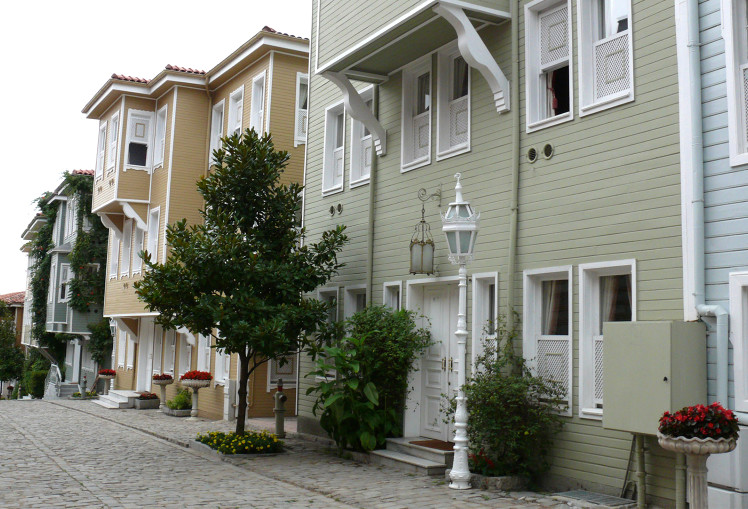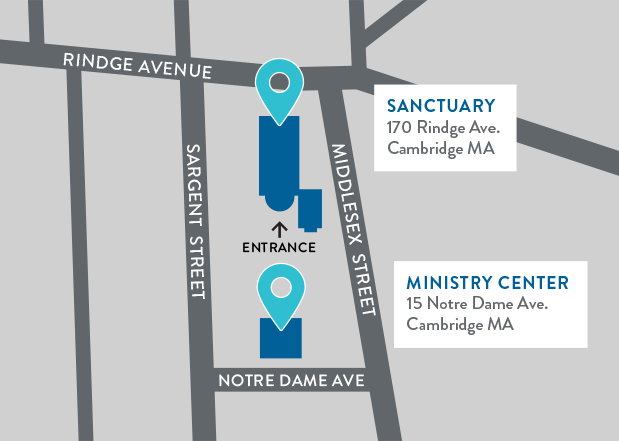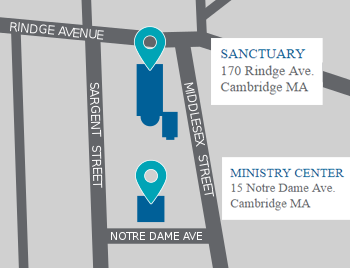Blog

Things to Think About In the Art of Neighboring – Week 2
April 25, 2016
Matthew 22: 34-40 (NIV)
34 Hearing that Jesus had silenced the Sadducees, the Pharisees got together. 35 One of them, an expert in the law, tested him with this question: 36 “Teacher, which is the greatest commandment in the Law?”
37 Jesus replied: “‘Love the Lord your God with all your heart and with all your soul and with all your mind.’ 38 This is the first and greatest commandment. 39 And the second is like it: ‘Love your neighbor as yourself.’ 40 All the Law and the Prophets hang on these two commandments.”
In the sermon this week – Ivy offered a visual representation of how the greatest commandment can be understood. She used an image of a 2-hinged door. One hinge being – Love the Lord your God. The second hinge being – love your neighbor as yourself. These two hinges working together allow a great arch and movement of love to go before us in our lives. This allows us great, wide expansive views of the landscape in front of us – inclusive of people who we can neighbor. If only one of the hinges is in motion – the other hinge likely gets overworked or overstressed. Often the overworked/overstressed hinge represents us – as we have to force and create our own extension of love – without connection to God.
Questions & Invitations:
Take stock of your neighboring efforts. How do you feel like they are operating? Are there some that feel in full swing – with two-hinges engaged? Are there some that feel more one-hinged? Can you identify the ones where you are doing the hard work of pushing the great big door of love open?
If the one-hinged approach to loving your neighbor resonates with you – invite God back into your neighboring relationships to connect you with His abundant resourcing.
Pray through verses of the greatest commandment – ask God to supernaturally expand your picture of love for Him as well as your neighbors – this week.
***************************************************************************
Metaphorical vs. Literal Neighboring
In the book, The Art of Neighboring, by Jay Pathak and Dave Runyon they talk a lot about taking the second half of the greatest commandment, “to love your neighbor as yourself” literally. This literal picture of neighboring, however, often proves to be a real challenge in the context of our own lives; our stages of life, our neighborhood configuration and perhaps our introverted tendencies.
This challenge of thinking of our actual neighbors can often move us into a place of metaphorical neighboring. And we can start to define our “neighbor” in the broadest of terms – as the “neighbor across town” or the organization we volunteer at and donate to, or anyone who’s in need. While this is perfectly true – it tends to take away from the importance of neighboring our immediate neighbors. And the end result is that we often love neither our nebulous neighbor or our literal neighbor well.
Dave and Jay put it this way:
“When we try to love everyone, we often end up loving no one. If we are not careful, we can end up having metaphorical love for our metaphorical neighbors and the end result is that we actually do nothing.”
Questions & Invitations
Where are your efforts of neighboring? In the metaphorical or literal realm?
What can you identify as your own reasons as to why metaphorical neighboring might be more your pulse right now?
If your metaphorical neighboring is a result of fear or busyness – ask God to help guide you into conversations and interactions with neighbors that will break down these hurdles.
Ask God to give you fresh eyes for the neighbors that surround you this week. Ask Him for a wide view with clear, peripheral vision.
*****************************************************************************
The Good Samaritan Parable
Luke 10:25-37 (NLT)
25 One day an expert in religious law stood up to test Jesus by asking him this question: “Teacher, what should I do to inherit eternal life?”
26 Jesus replied, “What does the law of Moses say? How do you read it?”
27 The man answered, “‘You must love the Lord your God with all your heart, all your soul, all your strength, and all your mind.’ And, ‘Love your neighbor as yourself.’”
28 “Right!” Jesus told him. “Do this and you will live!”
29 The man wanted to justify his actions, so he asked Jesus, “And who is my neighbor?”
30 Jesus replied with a story: “A Jewish man was traveling from Jerusalem down to Jericho, and he was attacked by bandits. They stripped him of his clothes, beat him up, and left him half dead beside the road.
31 “By chance a priest came along. But when he saw the man lying there, he crossed to the other side of the road and passed him by. 32 A Temple assistant walked over and looked at him lying there, but he also passed by on the other side.
33 “Then a despised Samaritan came along, and when he saw the man, he felt compassion for him. 34 Going over to him, the Samaritan soothed his wounds with olive oil and wine and bandaged them. Then he put the man on his own donkey and took him to an inn, where he took care of him. 35 The next day he handed the innkeeper two silver coins, telling him, ‘Take care of this man. If his bill runs higher than this, I’ll pay you the next time I’m here.’
36 “Now which of these three would you say was a neighbor to the man who was attacked by bandits?” Jesus asked.
37 The man replied, “The one who showed him mercy.”
Then Jesus said, “Yes, now go and do the same.”
Questions & Invitations
- The parable of the Good Samaritan is often read that we should be more generous and compassionate to those in need and that everyone is ultimately our neighbor. This is a generative interpretation and one that can call out of us an inclination to take a good look at those around us and how we are interacting with them.
- In addition, what can we learn about “loving our neighbor as our-self” – if we imagine the law expert as the robbed victim in the parable? What could Jesus be showing the law expert and us about this perspective?
- The law expert asks Jesus after the discussion of the greatest commandment – “Who is my neighbor?” Jesus tells the law expert the story of the Good Samaritan and then he poses this question back to the law expert, “Now who was a neighbor?”
What does this question flip open up for the law expert in theory? What does it open up for us in our own way of thinking about neighboring?
- If Jesus is suggesting that one of our first steps in thinking of neighboring well – is to imagine our neighbor as ourselves – what messages do you glean about your own neighboring if you do this?
- In verse 33, the Good Samaritan after seeing the victim on the side of the road, then “feels compassion” for him and out of this seems to pour forth an abundance of resourcing – to powerfully meet the needs of this man on the side of the road.
- Ask God to help you step out, see and feel compassion for those around you. In addition ask Him to help you believe for the wealth of abundance He’ll provide for whatever your neighboring needs might look like as you do so.
- If the road from Jerusalem to Jericho – can represent our own road of life – full of messiness, danger and real life needs… Take time to reflect and identify people in your own life who have represented the spirit of the Samaritan.
Thank God for them as you head out on this road today.
****************************************************************************
Invitation:
Last week the invitation was to use the “Neighboring Map” as a visual prayer guide, for more of God’s generosity to drip into your neighborhood. This week – use this Neighboring Map to gain a visual representation of how many of your neighbor’s names you know. Use this map as indicator of where a natural lean might be in your own neighboring efforts.
If you know all of your neighbors names – then move to facts that you know of your neighbors by having conversations with them (versus facts you can obtain by observing).
Utilize this map as a way to pray for your six neighbors as you move through the rest of our neighboring series.

